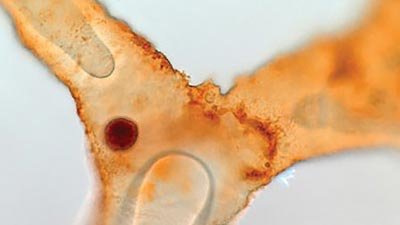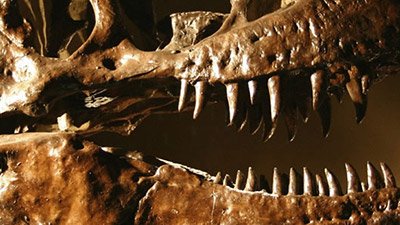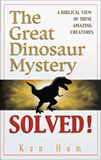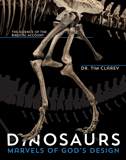
What Was Missing on 60 Minutes Sunday Evening?
Discerning viewers of Sunday evening’s 60 Minutes program about a remarkably preserved dinosaur bone should have noticed something missing. The “dinosaur in the room” was the program’s glossing over of the strong evidence that dinosaurs probably did not die out 65 million years ago in the evolutionary timetable.
The segment was hosted by a gushing CBS-TV correspondent Lesley Stahl, who, while enraptured by the T. rex’s preserved soft tissue (including elastic blood vessels, with red blood cells, in its thigh bone) right in front of her, never thought to ask the question (at least on camera): why isn’t such preservation actually highly compelling evidence that dinosaurs have been around in recent times? If dinosaurs perished 65 million years ago, how in the world could the soft tissue have possibly survived and not have dried out 64 million years ago?
60 Minutes is a Peabody-winning investigative news program. Its awards are largely a tribute to the hard-charging efforts of its former executive producer, the late Don Hewitt. Hewitt was known as someone who was a critical thinker and a good “baloney detector.” One might think that had Hewitt still been at the helm of 60 Minutes, he would have insisted that the program dive right into a staring-them-right-in-the-face controversy: that dinosaurs may have lived much more recently than evolutionists have been dogmatically proclaiming for decades. That should have been the real story on 60 Minutes Sunday night, but one that the producers and correspondent ignored. (They could have at least tried to offer an explanation as to how the tissue could have been preserved for so long.)
Even if they were not blood vessels, how could biofilm itself have remained for millions of years?
60 Minutes did allude to one controversy over what was really found in the T. rex’s thigh bone, but it had nothing to do with the creation/evolution debate. Some evolutionists have been trying to cast doubt on the validity of the tissue discovery. For example, they say that perhaps what has been declared as tissue is really mineral spheres (containing iron). As for the material that is “elastic” as the TV program stated, these same detractors say that it might be “bacterial biofilm,” meaning that where the T. rex’s blood vessels once were, bacteria produced biofilm in its place. Ultimately, though, 60 Minutes stated that they looked just like “flexible blood vessels.”
But consider this: even if they were not blood vessels, how could biofilm itself have remained for millions of years? This alternative explanation also supports our contention that the T. rex bone gives strong evidence that this dinosaur did not die millions of years ago.
Now, the 60 Minutes segment did try to make a case that dinosaurs did not become extinct 65 million years ago, namely: that the birds we see today are really dinosaurs. In fact, the program declared that this transition was a “settled” issue among scientists. Well, not all scientists, such as PhD biologist Dr. David Menton of our staff, who wrote this article: ““Ostrich-Osaurus” Discovery?”
We find it highly ironic that as evolutionists mock us and our Creation Museum for believing that humans and dinosaurs have coexisted, that they are declaring that dinosaurs (in the form of even chickens) live with us today.
Dr. Menton’s article also gives our fuller perspective on this remarkable T. rex find and how it supports the biblical timeline of history and not the evolutionary one.
Recommended Resources

Answers in Genesis is an apologetics ministry, dedicated to helping Christians defend their faith and proclaim the good news of Jesus Christ.
- Customer Service 800.778.3390
- © 2024 Answers in Genesis







